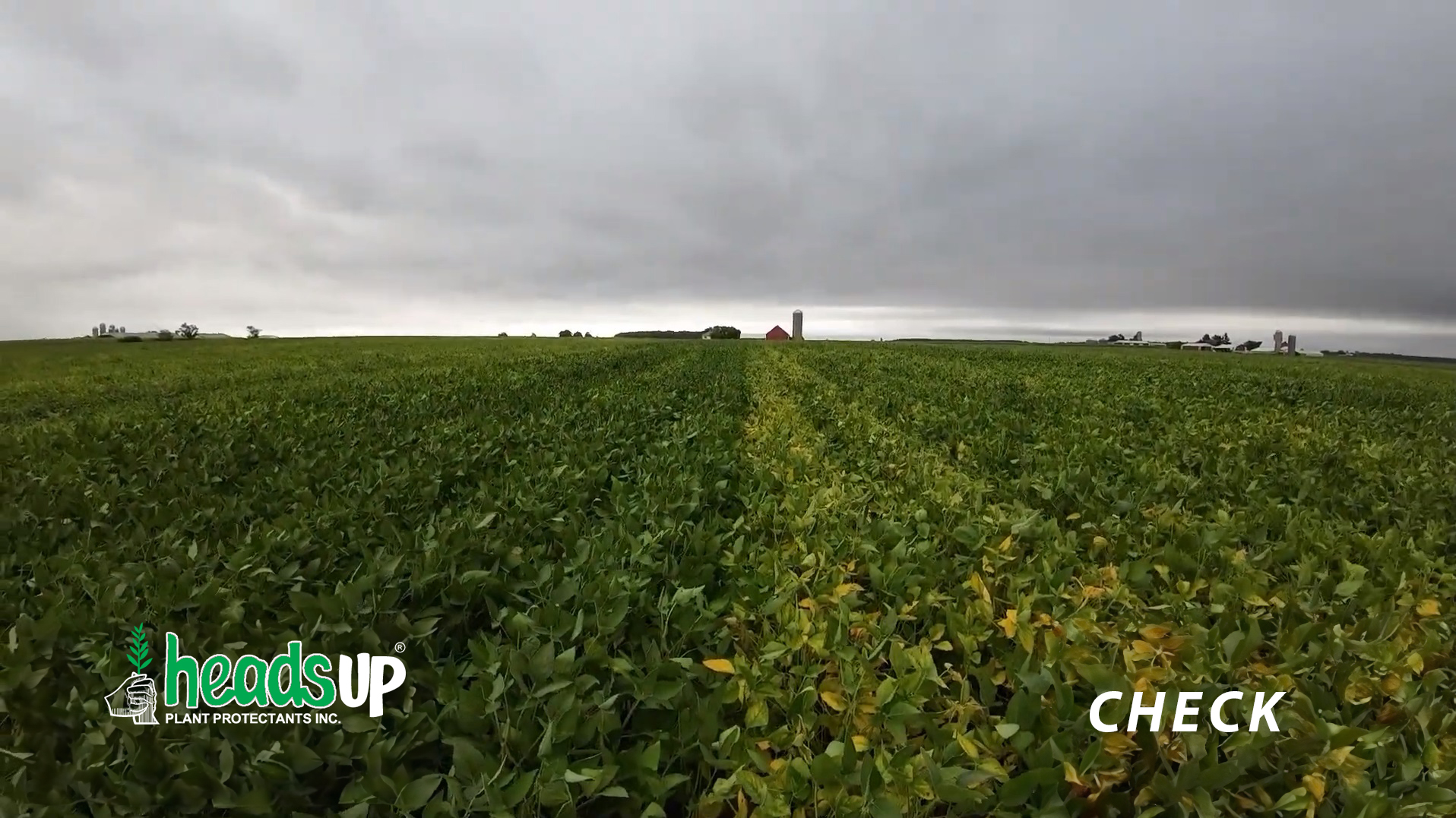The genetic potential of your seed is at risk, and the culprits may be quietly lurking in your fields.
White mold — a crop disease caused by the fungus Sclerotinia sclerotiorum — has been problematic for U.S. soybean growers for decades. Iowa farmers are no strangers to yield-robbing white mold outbreaks that crop up after a cool, wet growing season. Sadly, the fungus can overwinter in the soil and make a home in fields for several years if not appropriately managed. In fact, research by X.B. Yang, Ph.D., from Iowa State University has shown sclerotia can survive in soil for up to seven years, even with crop rotation.
Sudden death syndrome (SDS) in soybeans is also spreading its roots further north. A soil-borne fungal pathogen (Fusarium virguliforme), SDS has become more prevalent throughout Iowa as weather patterns favor its development. Additionally, as growers hit the field earlier in the planting season, they’re planting into cooler soils, which can exacerbate infection.
Paul Benson, owner and founder of Seed Professionals — a father-son-operated seed dealership and seed treatment facility in northwest Iowa — notes, “White mold and SDS are the two biggest culprits that are starting to show up in this area. I think it has a lot to do with everyone planting earlier into cooler soils.”
More on the culprits…
White mold and SDS alone affect 40 to 50 million acres in the north-central United States. Yield losses can be as high as 50% in fields with severe infestation.
“I’ve seen as much as a 20 bushel per acre loss with white mold and a 15 bushel per acre loss in a few fields affected by SDS,” Benson says. “If I had to average everything out, I would think that white mold is causing us a 6 to 7 bushel per acre loss. There is white mold in about every field out there; people just may not see it or aren’t scouting for it.”
Scouting is an important strategy to identify diseases in the field. White mold appears in July or early August, between the R3 and R6 growth stages. It looks like cotton on the soybean stems. Pay attention to initial symptoms that appear as white lesions above or below the nodes1. As the disease progresses, it moves down the stalk and causes rot, which leads to plant death. Foliar symptoms can include discoloration of leaf tissue, starting with a grayish tint and eventually turning brown with severe infection.
Sudden death syndrome begins at the roots and the lower stem of the plant and moves its way up, producing toxins as it invades the rest of the plant up through the leaves. You may notice scattered yellow spots on the leaves at first, but many growers do not notice symptoms until flowering. Iowa State University Extension and Outreach notes these spots are present between leaf veins.
“Spots grow to form large chlorotic and necrotic blotches between the leaf veins, while the midvein and major lateral veins remain green1.”
If growers suspect SDS in their fields, they can cut directly into the plant stem. In affected plants, the pith of the stem will have white discoloration.
Management is key
While no single strategy can entirely free your fields of white mold or SDS, there are a handful of management strategies growers can implement to ease concerns and the prevalence of these diseases.
Crop rotation. Rotating crops helps keep sclerotia at bay. Experts recommend rotating out of soybeans or other crops that are known to host sclerotia for two years at a time.
Variety selection. Selecting the right seed variety for your unique growing environment is key. If you’re in an area where white mold or SDS have been problematic in previous years, find a seed option that provides resistance against the two diseases. Most seed companies offer varieties with moderate resistance against disease pathogens. Walk through your options with your preferred seed provider.
Inputs. Growers should consider a seed treatment or fungicide (applied between the R1 and R3 growth stages) for added protection. Heads Up® is an environmentally friendly, season-long seed treatment that provides extra protection against several crop diseases, including SDS and white mold. Its lack of time-to-planting restrictions along with affordability make it an easy, effective option for soybean growers.
Take note, and plan ahead. As the adage goes, “practice makes perfect,” and this is true for crop management. Scout during the season, noting areas of concern, and plan ahead to help mitigate issues in your field next year. Understanding your fields will only add to your ROI.
“The number one recommendation I have for growers is to find a soybean that not only matches their field conditions and their soil but also has natural SDS or white mold built-in tolerance,” Benson says. “And then I would mix in my Heads Up product. That’s where you’re going to get the most bang for your buck.”
A cost-effective path forward
Heads Up seed treatment is an EPA-registered biological that provides season-long control of a broad spectrum of fungal and bacterial diseases in several crops. For soybean growers, Heads Up offers added protection against infection of Rhizoctonia root rot and damping-off; Sclerotinia, the fungus that triggers white mold; Fusarium, the pathogen that causes SDS; and Pythium-based diseases.
At less than $4.00 per acre, Heads Up is often considered an “inexpensive insurance” to protect against yield loss.
“Last time I did calculations, over 90% of the seed that goes out from our business has Heads Up on it,” Benson says. “And it’s very cost-effective. I would say it’s about half the cost of a bushel of soybeans, probably a lot less than that now. And you’re absolutely going to get that back in yield.” He adds, “My regular side-by-sides show at least a 3 bushel per acre advantage with Heads Up in my area. And I’ve seen a 15 bushel per acre advantage with Heads Up on my fields that are affected with white mold. It really kicks the plant’s natural immune system in gear and does a nice job. It’s not a cure for the diseases, but it does help. It makes a big difference!”
As fungal and bacterial diseases become more prevalent in production agriculture, now’s the time to get ahead. Get a head start with Heads Up!
To learn more about Heads Up, visit About Heads Up or call 1-866-368-9306. Growers interested in learning more from Paul Benson of Seed Professionals can connect with Paul at 712-260-4240 or visit www.seedprofessionals.com.
1“Soybean Diseases,” Iowa State University Extension and Outreach, January 2018
“Solving the problem of white mold and SDS in soybeans,” Rapid City Journal, Feb. 2022
“Managing white mold in soybean,” Iowa State University Extension and Outreach, July 2014
“Answers to Questions About Soybean Sudden Death Syndrome in Iowa 2010,” Iowa State University Extension and Outreach, Sept. 2010

